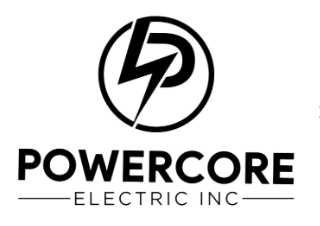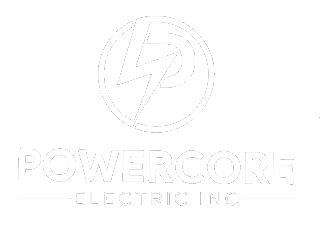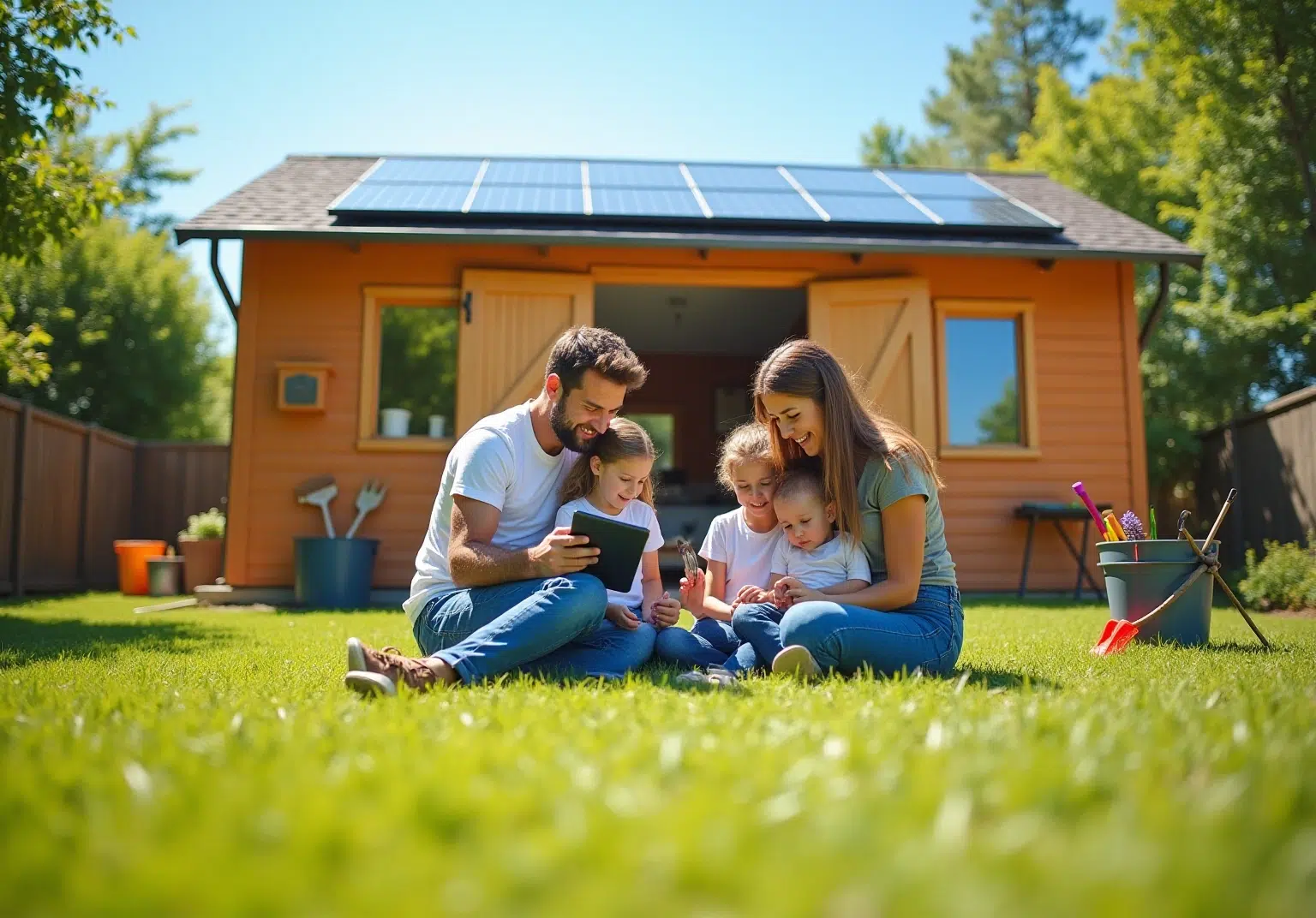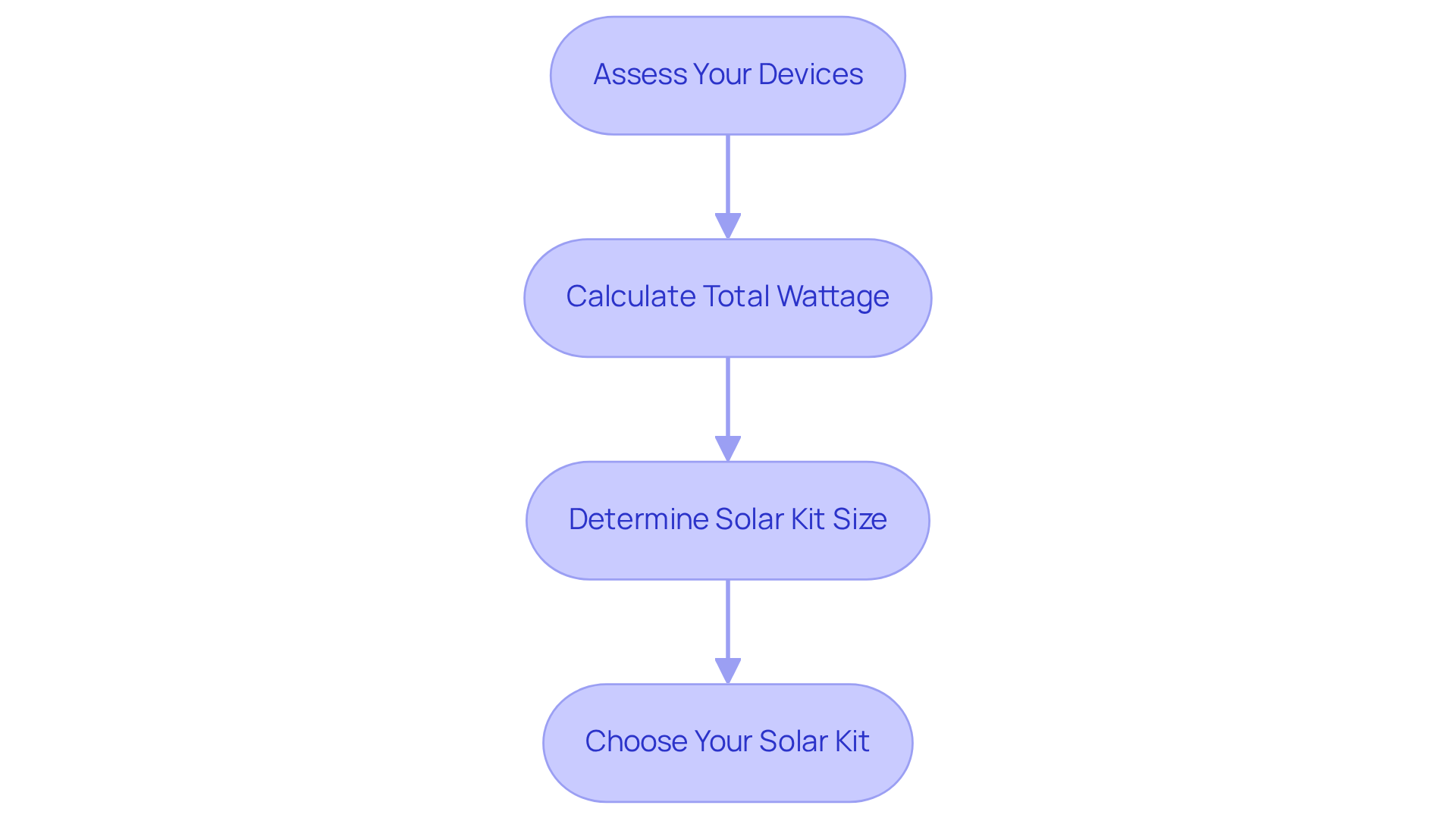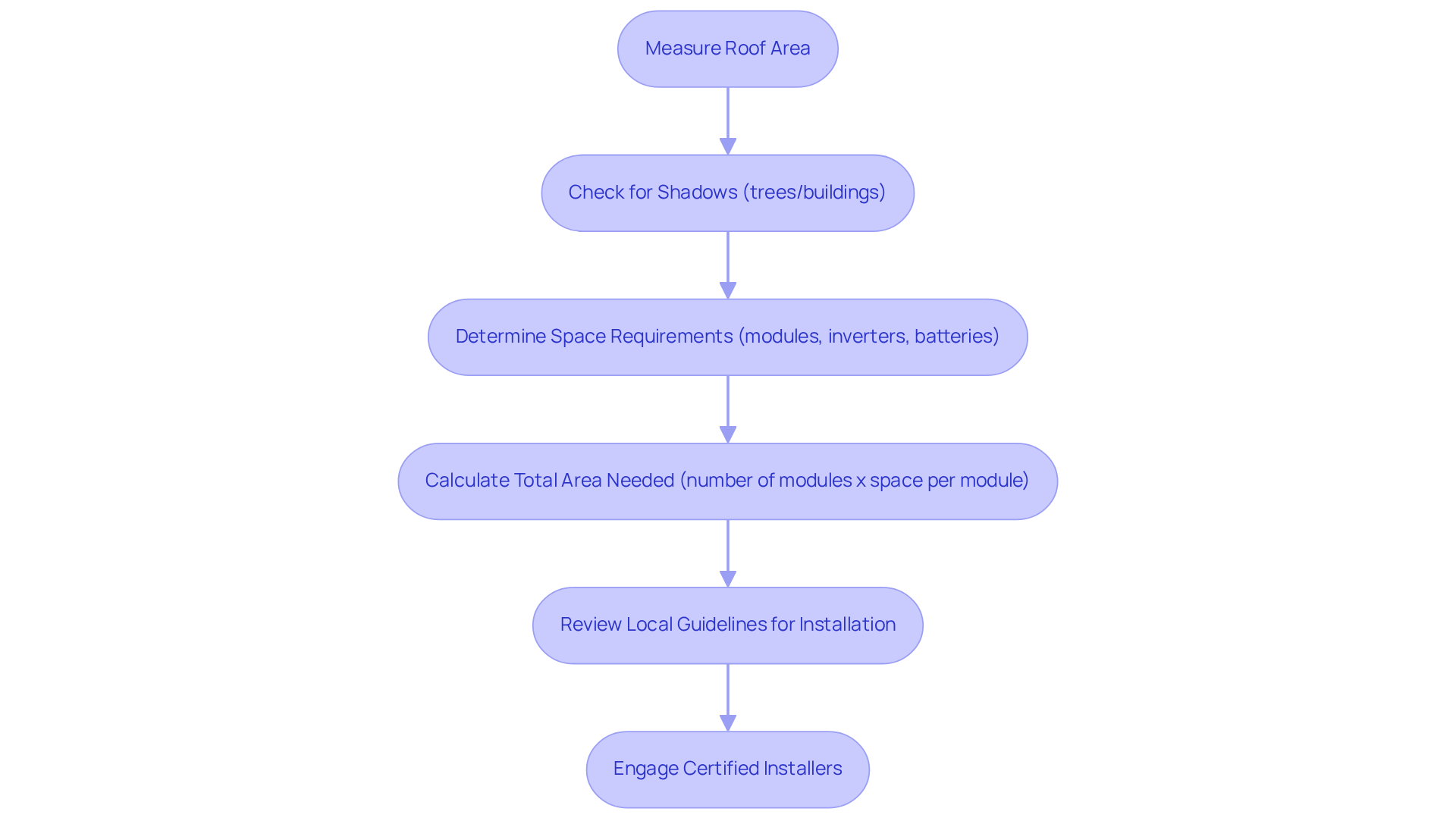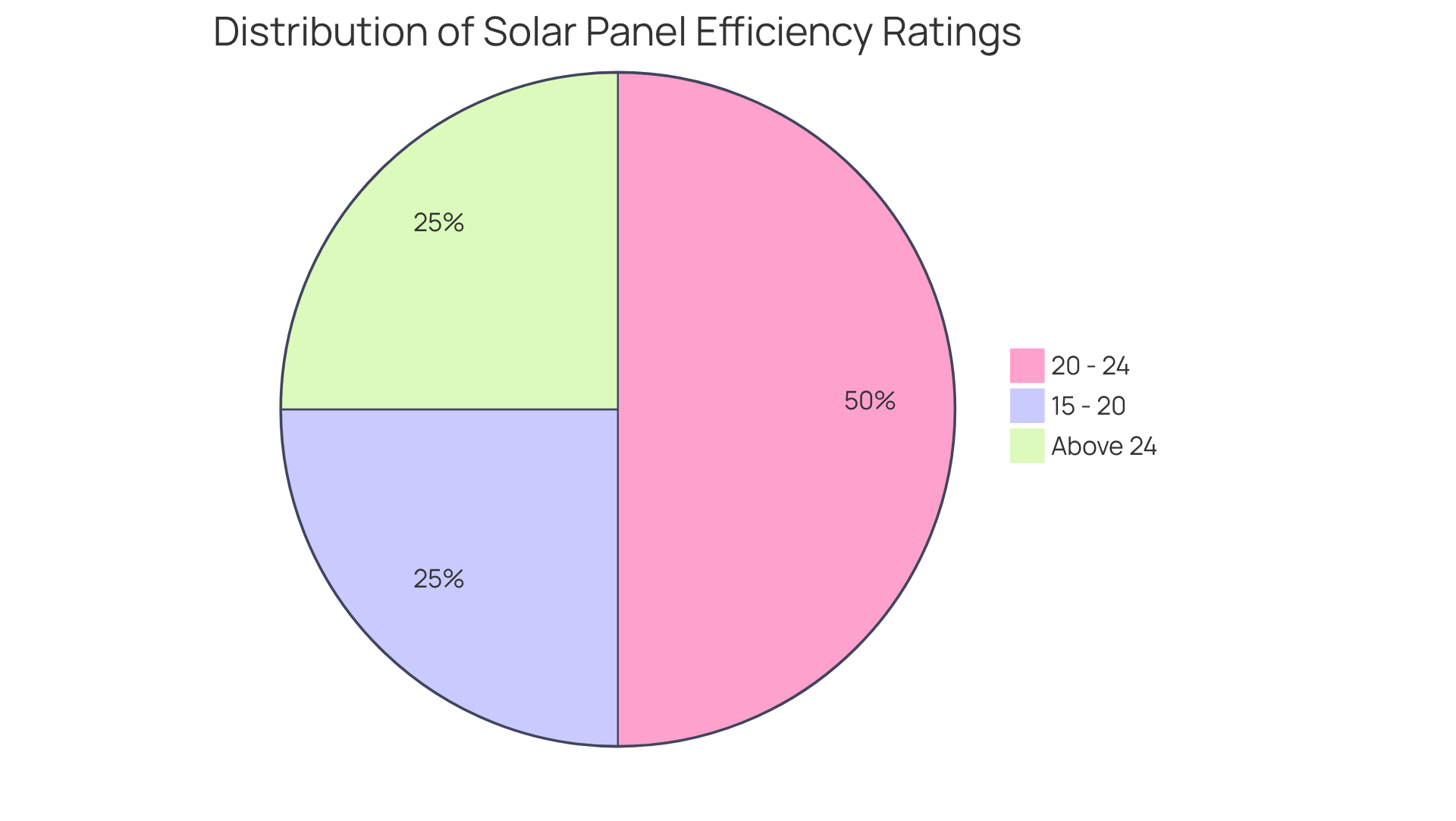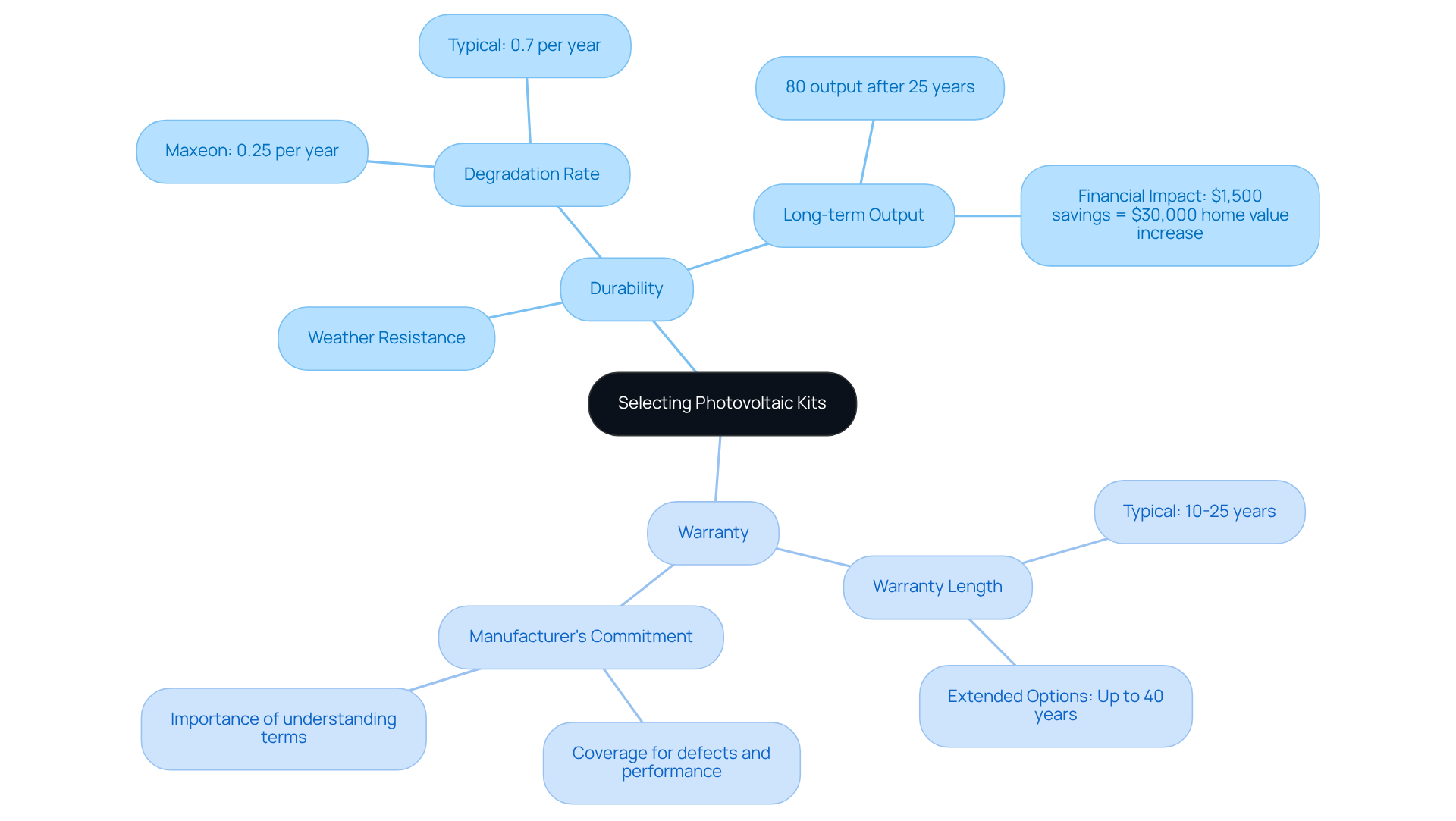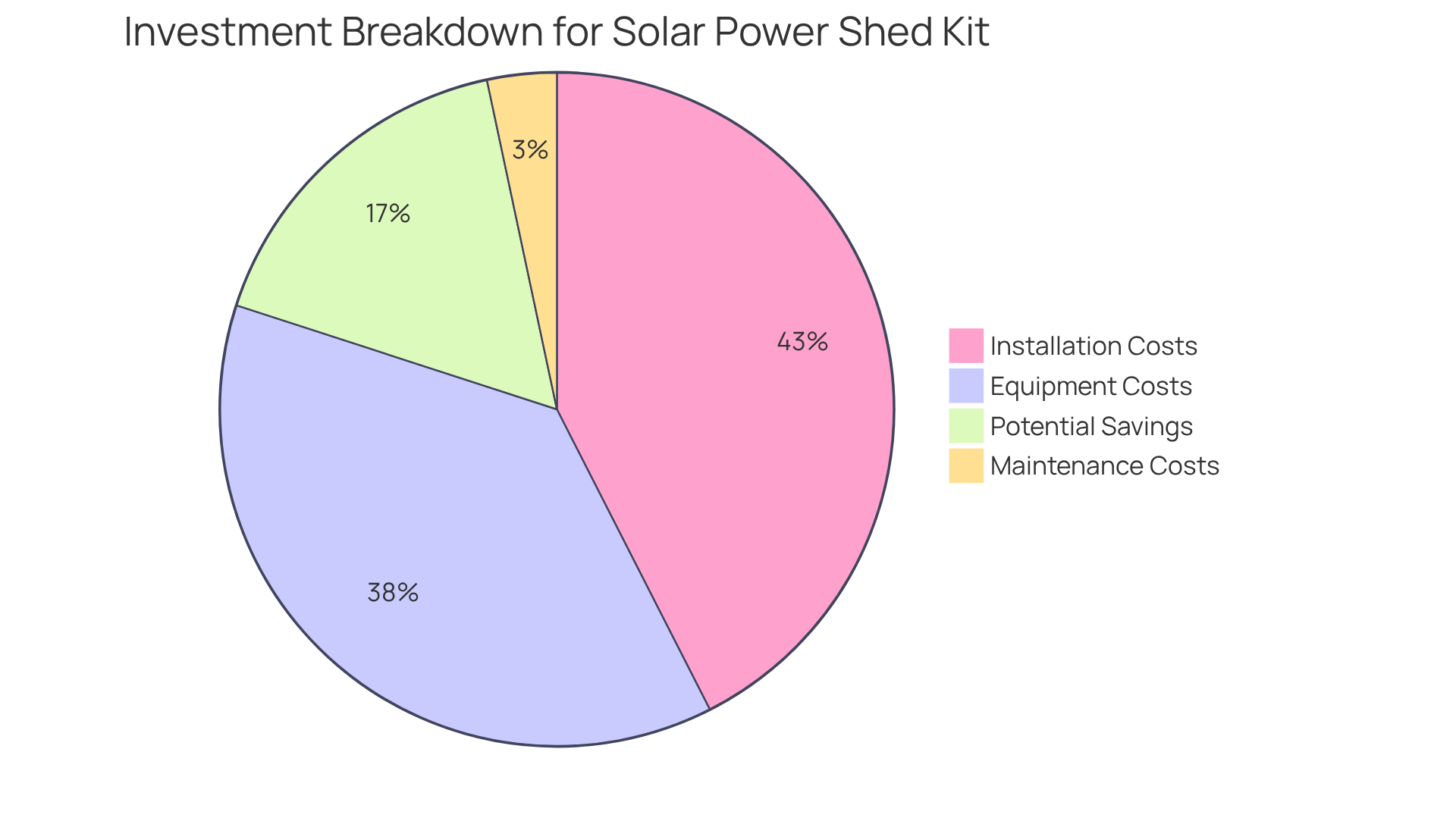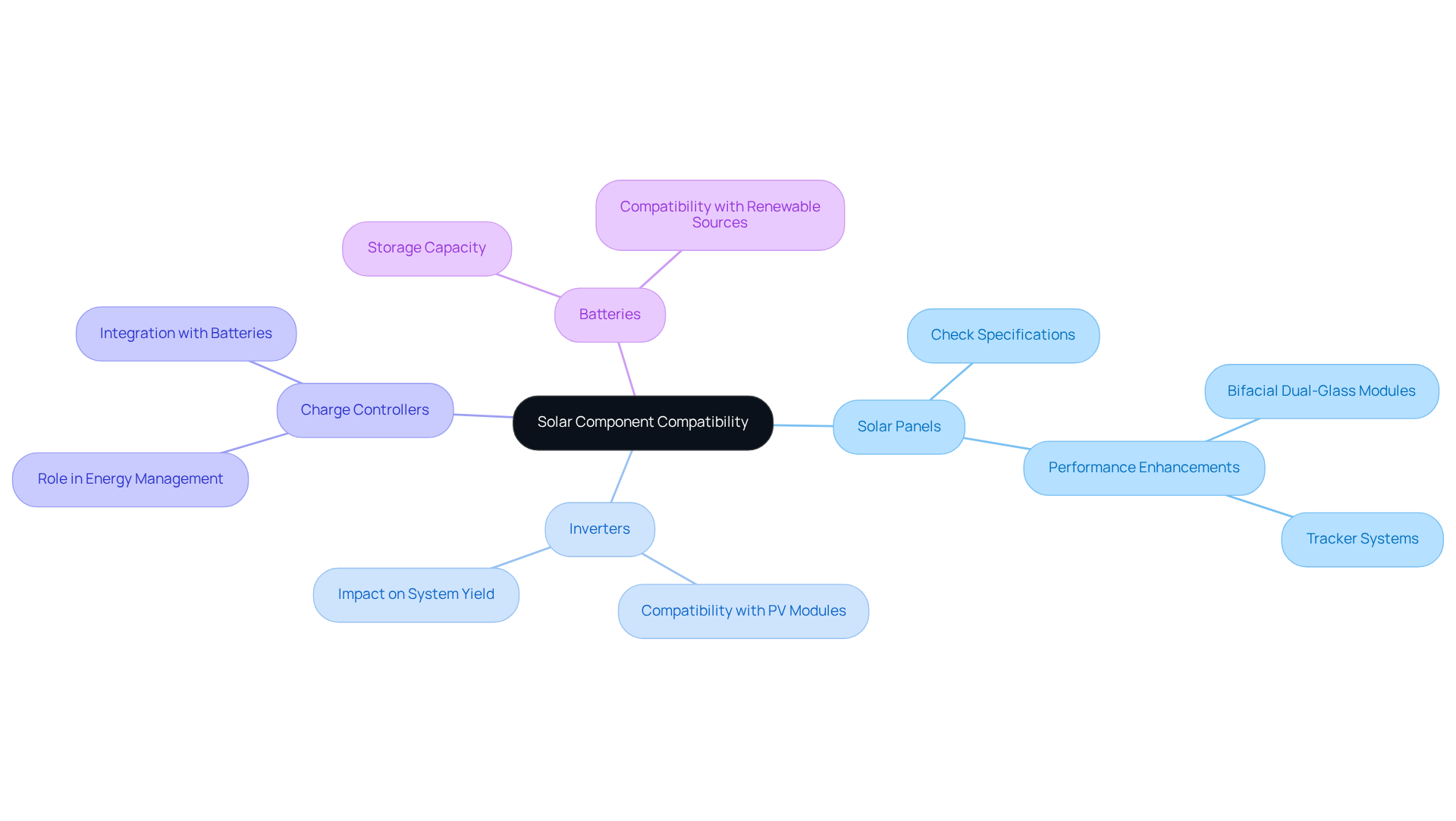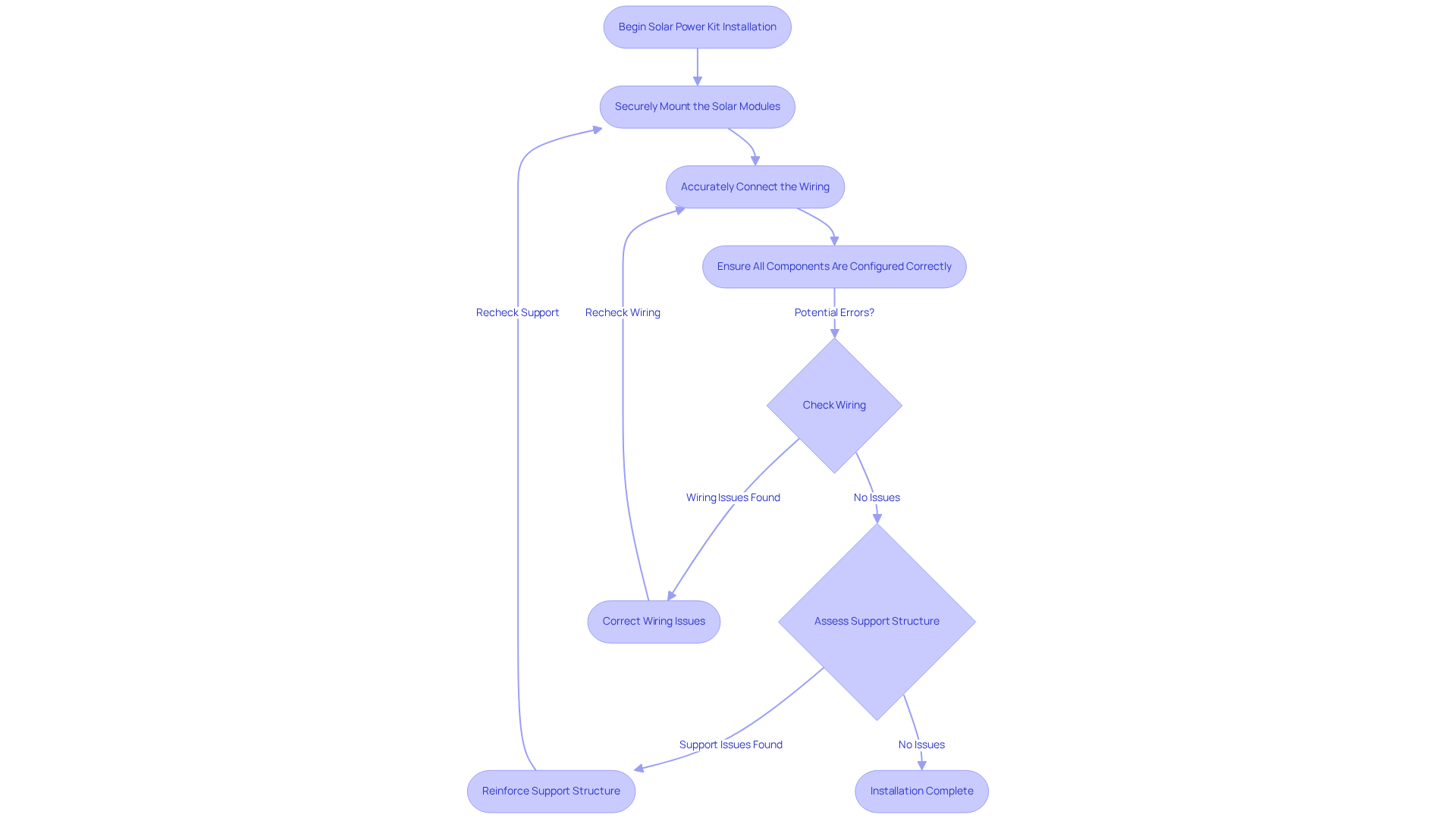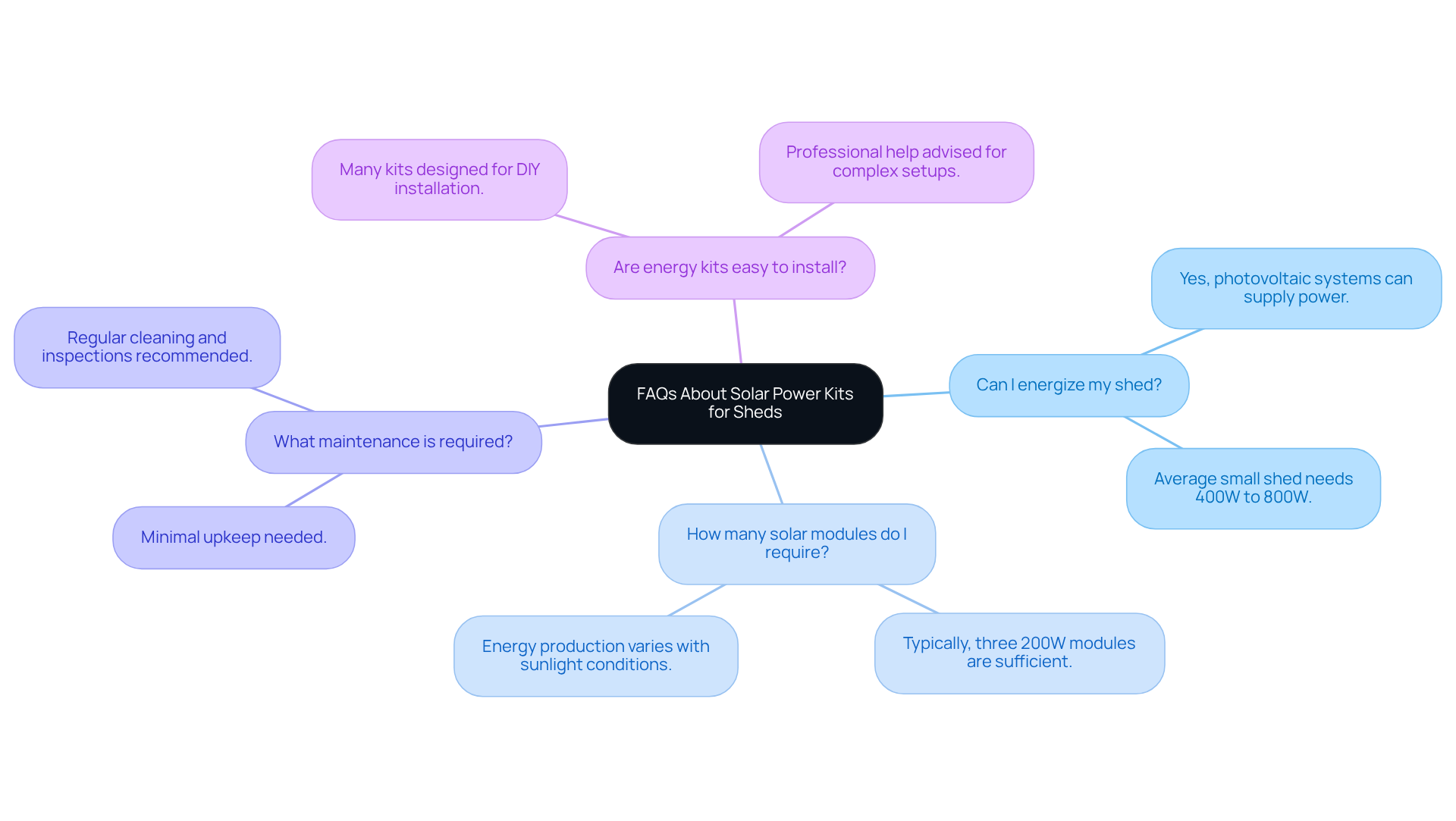Overview
In the article titled “9 Essential Tips for Your Solar Power Shed Kit,” we understand that many homeowners are concerned about rising energy bills. This guide aims to provide compassionate support in selecting and utilizing a solar power kit for your shed, ensuring you can make informed decisions that lead to energy independence.
We begin by addressing the essential considerations, such as:
- Evaluating your energy needs
- Assessing the available space
Choosing the right type of solar panels and ensuring compatibility of components are crucial steps that can significantly enhance your system’s efficiency. Together, these elements empower you to maximize your energy output and reduce reliance on traditional power sources.
By embracing solar energy, you not only contribute to a healthier planet but also gain control over your energy consumption. It’s common to feel overwhelmed by the choices available, but rest assured, we are here to guide you through this journey.
We encourage you to reflect on your current energy habits and consider how a solar power shed kit could transform your lifestyle. Let’s work towards a more sustainable future together. If you have any questions or need further assistance, please don’t hesitate to reach out—we’re here to support you every step of the way.
Introduction
As energy costs continue to rise, many homeowners find themselves increasingly concerned about their monthly bills and the impact on their budgets. We understand that this can be a source of stress, prompting the search for innovative solutions that promote energy independence and sustainability. Solar power shed kits offer a promising opportunity for individuals to harness the sun’s energy, significantly reducing reliance on traditional power sources. However, it’s common to feel overwhelmed by the numerous options and technical requirements available.
What essential factors should one consider to ensure an efficient and effective solar setup? Together, we can navigate this journey. This article unveils nine crucial tips designed to guide you through the process of selecting and installing the perfect solar power shed kit, paving the way for a greener, more self-sufficient future.
Powercore Electric: Expert Solar Solutions for Your Shed
At Powercore Electric, we understand that rising energy bills can be a source of stress for many homeowners. As a family-operated company based in Roseville, California, we are dedicated to providing customized renewable solutions that can ease your worries, including our innovative solar power shed kits. With over 30 years of experience in the industry, we offer a range of products designed to empower you, such as:
- High-efficiency photovoltaic panels
- Reliable battery backups
- EV charging stations
Imagine the peace of mind that comes with energy independence. By harnessing the power of the sun, you can not only reduce your energy costs but also contribute to a more sustainable future. Our commitment to exceptional service ensures that you receive tailored assistance throughout your renewable journey, making Powercore Electric a trusted partner in your transition to sustainable energy.
As the renewable energy sector continues to grow—predicted to rise by 15% annually—we are here to help you take full advantage of these advancements. Together, we can explore how solar energy can work for you, allowing you to enjoy the benefits of a cleaner, more efficient energy source. We invite you to reach out to us and discover how we can support you in making this meaningful change. Your journey towards starts here, and we are excited to be part of it.
Evaluate Your Energy Needs Before Choosing a Solar Kit
Before selecting a solar power shed kit, we understand that Long Beach renters may feel overwhelmed by their electricity requirements. It’s essential to assess the total wattage of the devices you intend to operate, including lights, tools, and any other equipment needing power. By grasping these requirements, you not only determine the size and capacity of the solar power shed kit needed but also take a significant step toward accessing sustainable power solutions.
Together, we can evaluate your energy needs effectively, helping you make informed choices about the best , such as the solar power shed kit, and complete power systems available. This ensures that your investment aligns perfectly with your specific needs, paving the way for energy independence and a more sustainable future.
Assess Available Space for Solar Panel Installation
Begin by measuring the roof or designated area of your shed intended for energy installation. We understand how important it is to ensure that this space is free from trees, buildings, or other structures that could cast shadows. Remember, shaded energy collectors can struggle to produce electricity as effectively as those basking in direct sunlight. Each standard residential photovoltaic module typically requires about 21 square feet, while the average size of a residential module is around 17.5 square feet. It’s essential to have enough space not only for the modules themselves but also for additional equipment like inverters and batteries, which play a crucial role in enhancing power storage and usage.
As you evaluate your roof area, keep in mind that a typical photovoltaic module measures approximately 6.5 feet by 3.25 feet. Thoughtful planning is key to optimizing energy production. For the best performance, aim for a roof orientation that maximizes sunlight exposure, ideally south-facing if you’re in the northern hemisphere. The direction of your roof can significantly influence its solar viability.
To calculate the total area needed, simply multiply the number of units by the square footage of each module. For instance, if you plan to install 22 units, you will need roughly 396 square feet of roof space, taking into account the necessary spacing between units. Additionally, local construction authority guidelines dictate where photovoltaic systems can be installed, with many regions having setback regulations that limit setup space. By following these guidelines and understanding how photovoltaic systems operate, you can effectively prepare your shed for a successful solar power shed kit installation. We also recommend to ensure the best design for your energy system, so together we can make your energy independence a reality.
Choose the Right Type of Solar Panels for Your Shed
When considering solar modules for your shed, we understand that it’s essential to grasp the differences between monocrystalline, polycrystalline, and thin-film options, alongside their financial and ecological benefits.
- Monocrystalline modules stand out with their high efficiency, typically ranging from 18% to 24%, and their compact design, making them ideal for limited spaces. This efficiency allows them to produce more electricity per square meter, making them a favored choice for smaller installations where roof space is precious. By choosing these modules, homeowners can significantly reduce utility costs and enhance their energy independence.
- On the other hand, polycrystalline modules are generally more budget-friendly, with efficiencies between 15% and 20%. While they may require more space to generate the same amount of energy as monocrystalline systems, their lower price can make them an . However, their slightly larger footprint may not suit every shed design, which is an important consideration during installation.
- Thin-film modules offer a lightweight and flexible alternative, making them suitable for unique setups where traditional units may not fit. Their efficiency typically ranges from 7% to 13%, which is lower than crystalline options, yet their adaptability can be beneficial in specific scenarios, promoting equitable access to solar power solutions.
Market trends show that monocrystalline modules are gaining popularity due to their superior efficiency and performance, especially in residential settings. Manufacturers often recommend monocrystalline modules for small setups, like a solar power shed kit, where optimizing power production is crucial.
In addition to selecting the right type of photovoltaic module, homeowners should also consider the differences between active and passive heating systems.
- Active systems use pumps and controls to circulate heat transfer fluids, making them ideal for homes that need consistent heating.
- Conversely, passive systems depend on building design and materials to maximize heat absorption, which can be particularly advantageous in milder climates.
By understanding these distinctions and evaluating the benefits of solar systems, homeowners can make informed choices that align with their energy needs, budget, and commitment to sustainability. Together, we can navigate these options to find the best solutions for your energy journey.
Check the Efficiency Rating of Solar Panels
We understand that rising energy bills can be a significant concern for homeowners. Solar module efficiency ratings typically range from 15% to 23%, with converting a larger percentage of sunlight into usable electricity. This is especially vital for those with limited roof space; more efficient modules allow for greater power generation in the same area. To maximize energy production in your solar power shed kit, prioritizing modules with higher efficiency ratings is essential.
For instance, the most effective modules available, like the Maxeon 7, achieve efficiencies of up to 24.1%. Meanwhile, Jinko Solar’s Tiger Neo 3.0 models impressively reach 24.8% efficiency, making them outstanding options for optimizing your output. Experts recommend selecting modules with efficiency ratings exceeding 20%—not only does this boost power generation, but it also enhances your return on investment over the lifespan of the system.
Furthermore, the typical efficiency of residential photovoltaic systems ranges from 18% to 24%, providing valuable insight as you evaluate your options. When choosing photovoltaic modules, consider factors such as efficiency, cost per watt, and the technology employed. This ensures that you invest in a solution that meets your power needs effectively.
It’s also important to recognize that temperature can impact panel efficiency, with optimal performance generally occurring around 25°C (77°F). By understanding these efficiency ratings and their implications, you can make informed choices about your energy solutions, such as a solar power shed kit, contributing to both economic savings and environmental sustainability. Together, let’s work towards a more sustainable future.
Consider Durability and Warranty When Selecting Kits
We understand that selecting a photovoltaic kit can feel overwhelming, especially when considering the long-term impact on your energy bills. It’s essential to prioritize the durability of the components alongside the warranty offered. Most solar modules come with warranties that typically span from 10 to 25 years, showcasing the manufacturer’s confidence in their product’s durability and efficiency. A strong warranty not only protects your investment but also signifies the manufacturer’s commitment to quality.
Look for modules designed to withstand severe weather conditions; for instance, producers like Maxeon assure a low degradation rate of just 0.25% each year following the initial year. Additionally, many modules retain at least 80% of their initial output after 25 years. This level of durability is vital, particularly in areas prone to severe weather, ensuring that your energy investment remains effective and dependable over time. Understanding the is crucial for safeguarding your investment.
Moreover, imagine a residential energy system saving $1,500 each year—this could enhance your property value by $30,000, highlighting the financial advantages of investing in durable energy panels. Together, we can navigate these choices and find the best solutions for your home.
Evaluate Costs and Return on Investment for Solar Kits
When you think about investing in a solar power shed kit, it’s essential to consider the overall expenses involved, including equipment, installation, and ongoing maintenance. Many homeowners worry about these costs, but understanding them can lead to a brighter, more sustainable future. For instance, in California, the average cost of a photovoltaic system is approximately $3.30 per watt, which translates to around $12,550 for a 5 kW system after applying the federal renewable energy tax credit. While this initial investment may seem significant, it can lead to substantial long-term savings on utility bills, with homeowners typically saving between $5,000 and $20,000 over the lifespan of their solar panels.
To truly grasp the return on investment (ROI), it’s helpful to evaluate your potential energy savings. A well-designed energy system can generate over 7,500 kWh annually, leading to average yearly savings of about $1,425. With a , many find that their energy investments pay off quickly—especially in states like California, where electricity rates are among the highest in the nation, averaging 29.54 cents per kWh. It’s common to feel uncertain about these numbers, but they highlight the real benefits of solar energy.
Financial analysts point out that the federal tax incentive for renewable energy allows homeowners to deduct 30% of their installation costs from their federal income taxes, significantly enhancing the financial feasibility of these investments. This incentive, coupled with local rebates and the potential for increased home value—estimated at 4% to 6%—makes the solar power shed kit an attractive option for those looking to reduce energy costs and gain greater independence. Together, we can work towards a sustainable future. A well-organized renewable energy setup not only provides immediate savings but also contributes to long-term financial stability. If you’re ready to explore how solar energy can benefit you, we’re here to support you every step of the way.
Prioritize Compatibility of Solar Components
We understand that when assembling your solar kit, ensuring that all components—solar panels, inverters, charge controllers, and batteries—are is crucial. Incompatible components can lead to substantial inefficiencies, diminished power generation, and potential system failures, which can ultimately result in financial losses. For instance, did you know that the combination of bifacial dual-glass modules with a tracker system can enhance output by 5% to 30% compared to conventional configurations? This highlights the importance of making informed choices.
In 2023, we saw a remarkable rise of nearly 40% in installations of photovoltaic systems, underscoring the necessity of ensuring compatibility in energy systems. Therefore, we encourage you to check specifications meticulously and consult with suppliers to confirm compatibility before making a purchase. By taking this proactive step, you not only improve your system’s performance but also protect your investment in renewable technology. Together, we can ensure a dependable and efficient energy solution for your home or shed by utilizing a solar power shed kit, paving the way for energy independence and a sustainable future.
Learn How to Properly Install Your Solar Power Kit
We understand that managing energy bills can be a significant concern for homeowners. When setting up your power kit, it’s essential to follow the for a successful installation. Key steps include:
- Securely mounting the solar modules
- Accurately connecting the wiring
- Ensuring all components are configured correctly
It’s common to encounter setup errors, such as incorrect wiring or insufficient support for the unit, which can lead to inefficiencies or safety risks.
By employing a specialist, like the caring professionals at Powercore Electric, you can navigate these challenges with confidence. Their guidance not only ensures adherence to safety regulations but also enhances the overall efficiency of your energy system, including panels and battery backups. Investing in expert setup allows you to avoid potential drawbacks and truly maximize the advantages of your energy system.
Before installation, remember to ensure access to key areas like the loft, consumer unit, and electricity meter. This simple step can streamline the process, making it easier for you to embrace the benefits of a solar power shed kit and work towards energy independence. Together, we can create a sustainable future that alleviates your energy concerns and empowers your household.
Explore FAQs About Solar Power Kits for Sheds
- Can I energize my shed with photovoltaic modules? Yes, we understand that finding ways to reduce energy bills is important to you. Photovoltaic systems, such as a solar power shed kit, can efficiently supply power to your shed, tailored to your specific power requirements and the dimensions of your setup. For instance, an average small shed might need between 400W to 800W of power capacity to fulfill its needs.
- How many solar modules do I require? It’s common to wonder about the number of modules needed, and this can vary based on your energy usage. Typically, a with three 200W modules can produce adequate energy for basic shed operations, especially under optimal sunlight conditions.
- What maintenance is required? We know that maintenance can be a concern, but solar panels require minimal upkeep. Regular cleaning and occasional inspections are key to ensuring optimal performance, helping to maintain efficiency and prolong the lifespan of your system.
- Are energy kits easy to install? Many solar power shed kits are designed for DIY installation, making them accessible to homeowners like you. However, if your setup is more complex—such as those requiring battery storage or grid connections—professional assistance is advisable to ensure safety and compliance with local regulations.
Together, we can explore these options and find the best solutions for your energy needs.
Conclusion
Investing in a solar power shed kit is not just a decision; it’s a meaningful step toward achieving energy independence and sustainability. We understand that many homeowners are concerned about rising energy bills and the impact of traditional power sources on the environment. By embracing solar energy, you can significantly reduce your reliance on these sources, lower your energy costs, and contribute to a cleaner, healthier planet.
As you embark on this journey to harness solar power, it’s essential to first understand your specific energy needs and evaluate the space available for installation. Choosing the right components is crucial to creating an efficient and effective system. Throughout this guide, we’ve shared valuable tips, including:
- Assessing your energy requirements
- Selecting suitable solar panels
- Ensuring component compatibility
Each of these factors is vital for maximizing the efficiency and longevity of your solar setup.
Moreover, we cannot overlook the importance of durability, warranty, and a thorough understanding of costs and return on investment. These elements directly impact the overall success of your solar energy initiative. As the renewable energy landscape continues to evolve, taking proactive steps toward implementing solar solutions can lead to substantial long-term benefits.
We encourage you to explore the various options available, engage with experts, and reflect on how solar power can transform your energy consumption. By making informed decisions, you can pave the way toward a sustainable and financially rewarding energy future. Together, let’s work towards creating a cleaner, more independent energy landscape that benefits not just you, but also our community and the environment.
